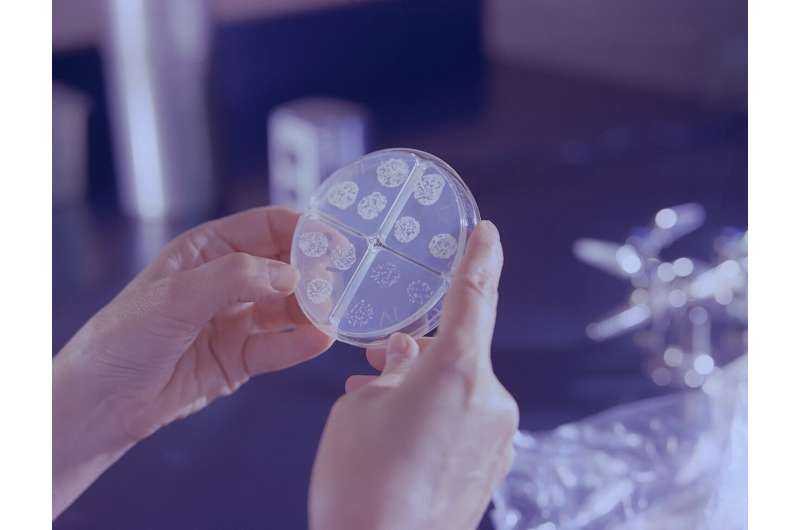This article has been reviewed according to Science X's editorial process and policies. Editors have highlighted the following attributes while ensuring the content's credibility:
fact-checked
trusted source
proofread
Silent pandemic: Report charts path for curbing antimicrobial resistance

A report released today outlines the challenges Australia and the world need to overcome to avoid being thrust back into a pre-antimicrobial age where simple infections are deadly and some surgeries are too risky to perform.
Australia is seeing a growing "silent pandemic" of antimicrobial resistance (AMR)—when bacteria and other microbes become resistant to the drugs designed to kill them, such as antibiotics, usually from misuse or overuse.
The report, "Curbing antimicrobial resistance: A technology-powered, human-driven approach to combating the 'silent pandemic,'" calls for greater national coordination and a focus on streamlining commercialization processes for new antimicrobial resistance solutions and technologies.
It was developed by the Australian Academy of Technological Sciences and Engineering (ATSE) and initiated by CSIRO, Australia's national science agency.
Branwen Morgan, Lead of CSIRO's Minimizing Antimicrobial Resistance Mission, said AMR was recently designated one of the top 10 public health threats facing humanity by the World Health Organization (WHO).
"AMR could render some of the most critical antimicrobial drugs ineffective, undermining modern medicine and making us vulnerable to drug-resistant infections," Dr. Morgan said.
"It is responsible for over 1.27 million deaths globally each year and the number is rising.
"In Australia, modeling suggests AMR could potentially be responsible for over 5,000 deaths annually.
"This report calls out the key challenges and opportunities for Australia to improve how we prevent, detect, diagnose and respond to drug-resistant infections and reduce the impacts of AMR," she said.
The report drew on the expertise of more than 100 multidisciplinary experts across government, academia and industry and looked at a range of potentially impactful technologies such as:
- Integrated surveillance and sensing solutions
- Point-of-care diagnostics
- Vaccination technologies
- Antimicrobial surfaces
- Air sterilization technologies
Specific examples included surface sprays that change color when pathogens are present, and toilets that detect and disarm harmful microbes before they reach our waterways.
ATSE CEO Kylie Walker said Australia has the potential to be a global contributor in the development of technologies to combat AMR and should aspire to be a world leader in its management.
"We have a wealth of creative AMR technology solutions emerging in Australia. We must support these innovations through the commercialization process so they can be delivered in the settings they are needed, in a streamlined, sustainable, and coordinated way," Ms. Walker said.
The report supports work underway by the Minimizing Antimicrobial Resistance Mission, developed by CSIRO with the Australian Departments of Agriculture, Fisheries and Forestry, and Health and Aged Care.
Dr. Morgan said the report highlights the importance of a collaborative, preventative approach to AMR, which is a key tenet of the Mission.
"We aim to work with end-users, academic and industry partners to identify and prioritize solutions that have the greatest impact on preventing and managing further resistance," Dr. Morgan said.
"The report provides thought-provoking and multidisciplinary ways for organizations or groups to tackle the rising challenge of AMR," she said.
More information: Curbing Antimicrobial Resistance: www.csiro.au/en/about/challeng … microbial-Resistance



















